Bài giảng Introduction to Software Engineering - Week 2: Software Processes - Nguyễn Thị Minh Tuyền
The software process
£ A structured set of activities required to develop a
software system.
£ 4 fundamental activities:
p Specification – defining what the system should do;
p Design and implementation – defining the organization of the
system and implementing the system;
p Validation – checking that it does what the customer wants;
p Evolution – changing the system in response to changing
customer needs.
£ A software process model
p Is an abstract representation of a process.
p Presents a description of a process from some particular
perspective.
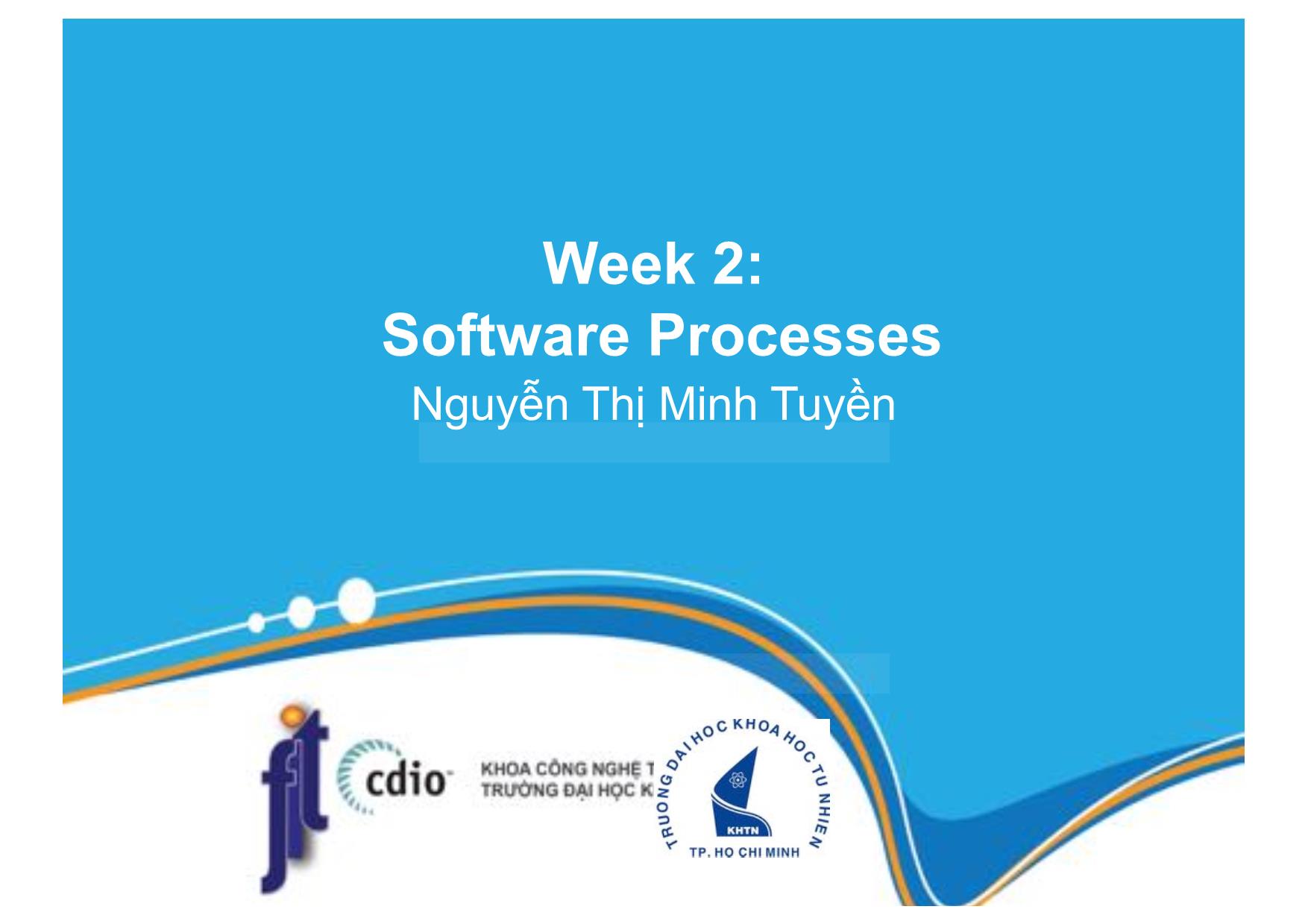
Trang 1
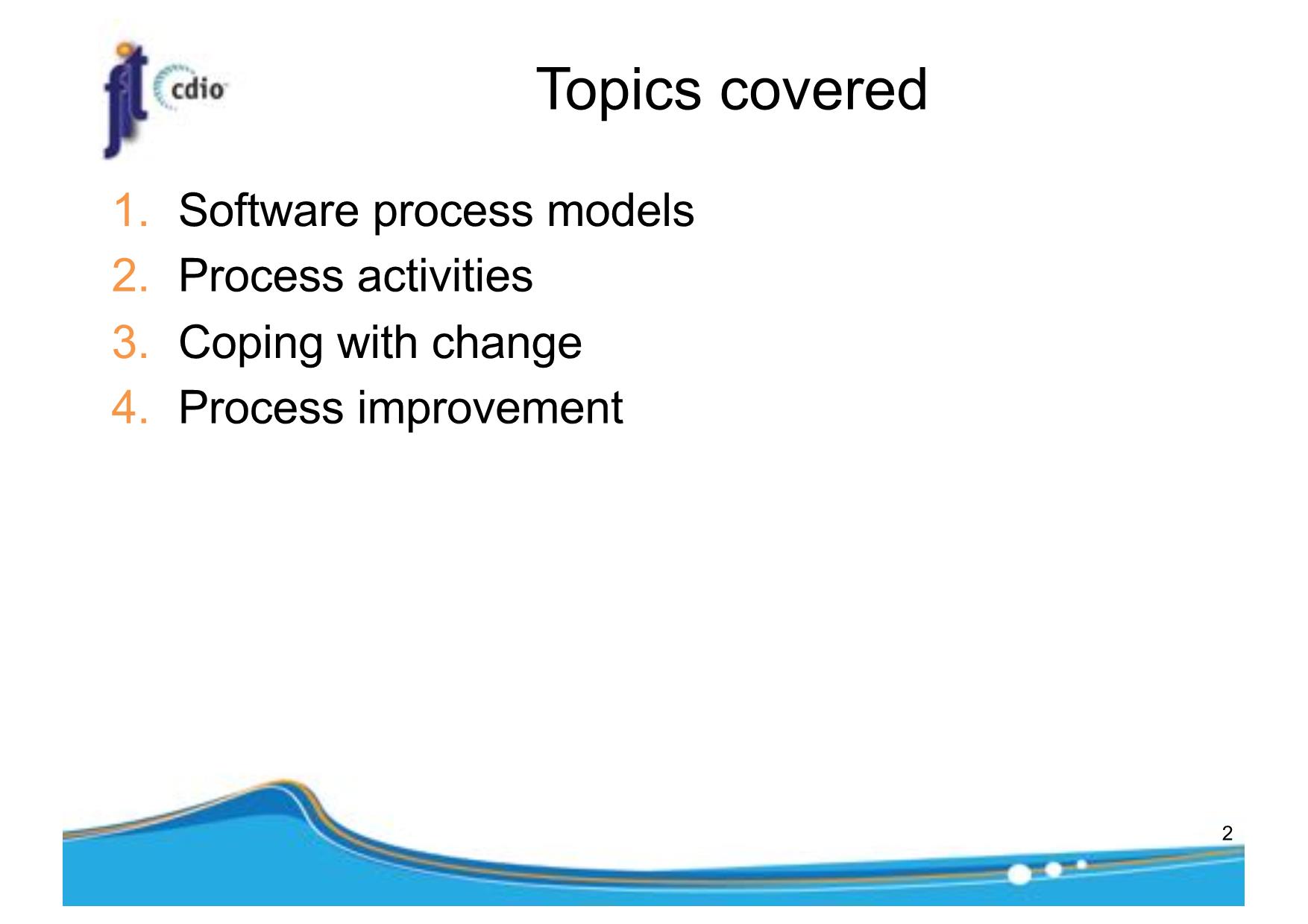
Trang 2
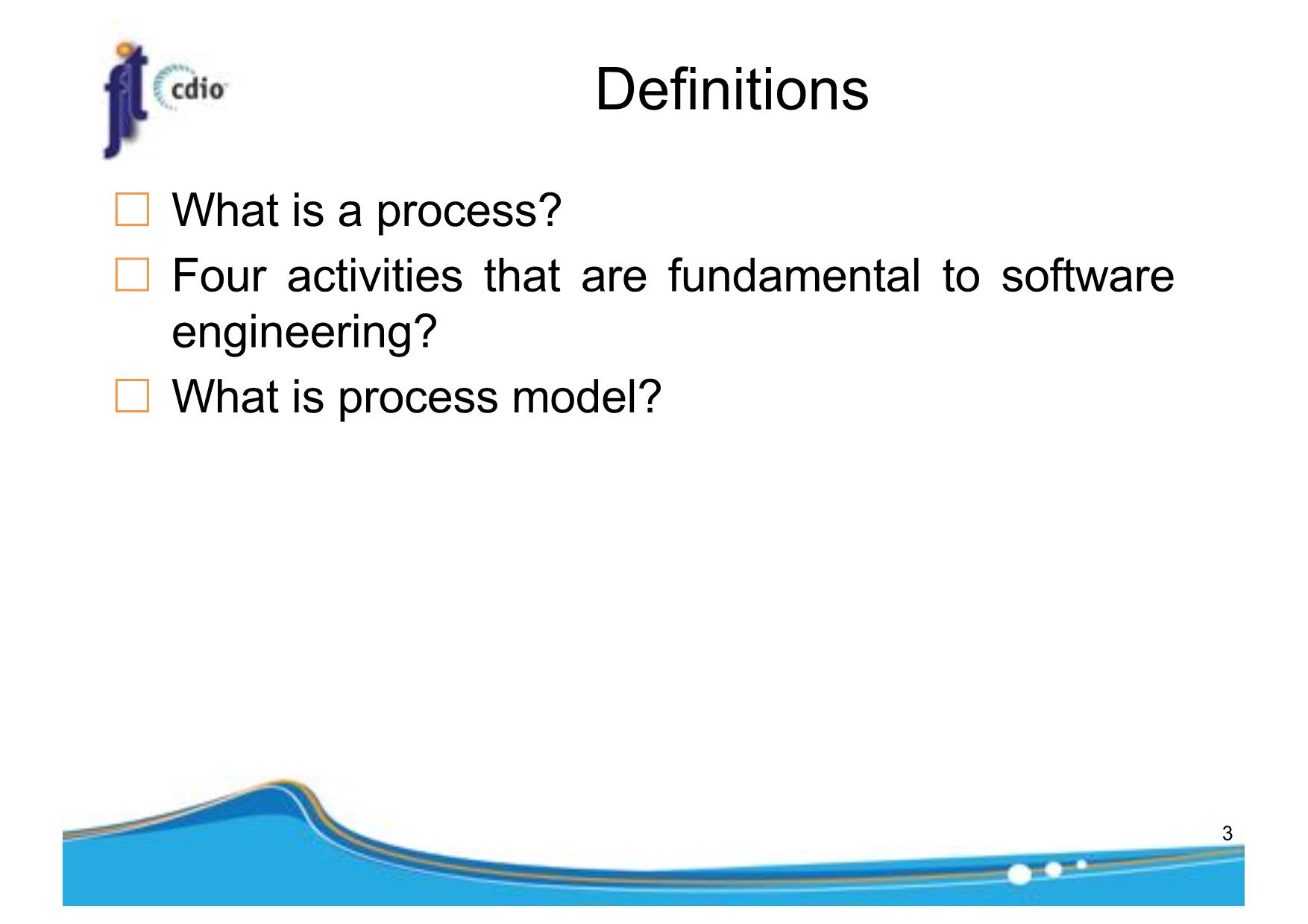
Trang 3
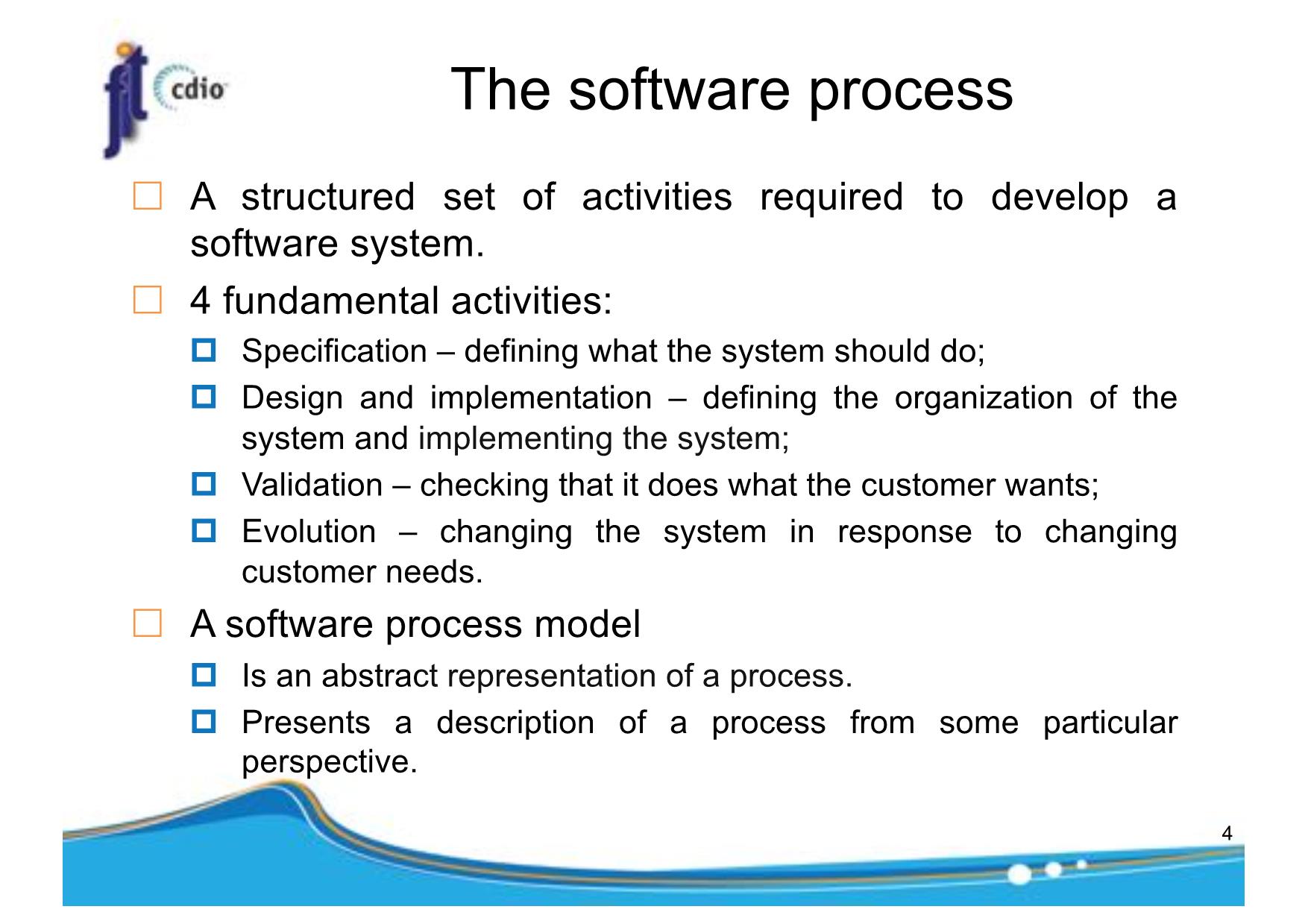
Trang 4
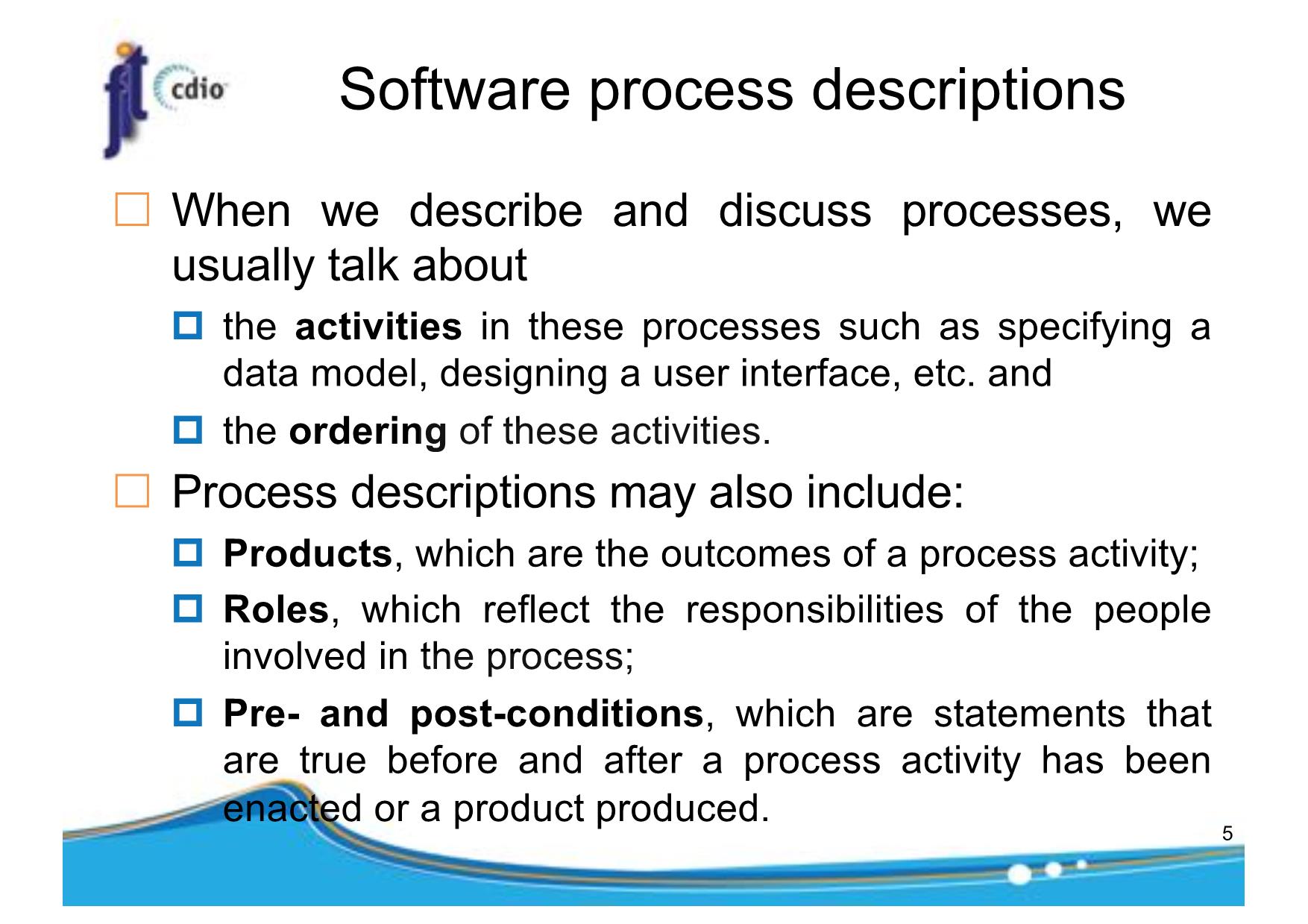
Trang 5
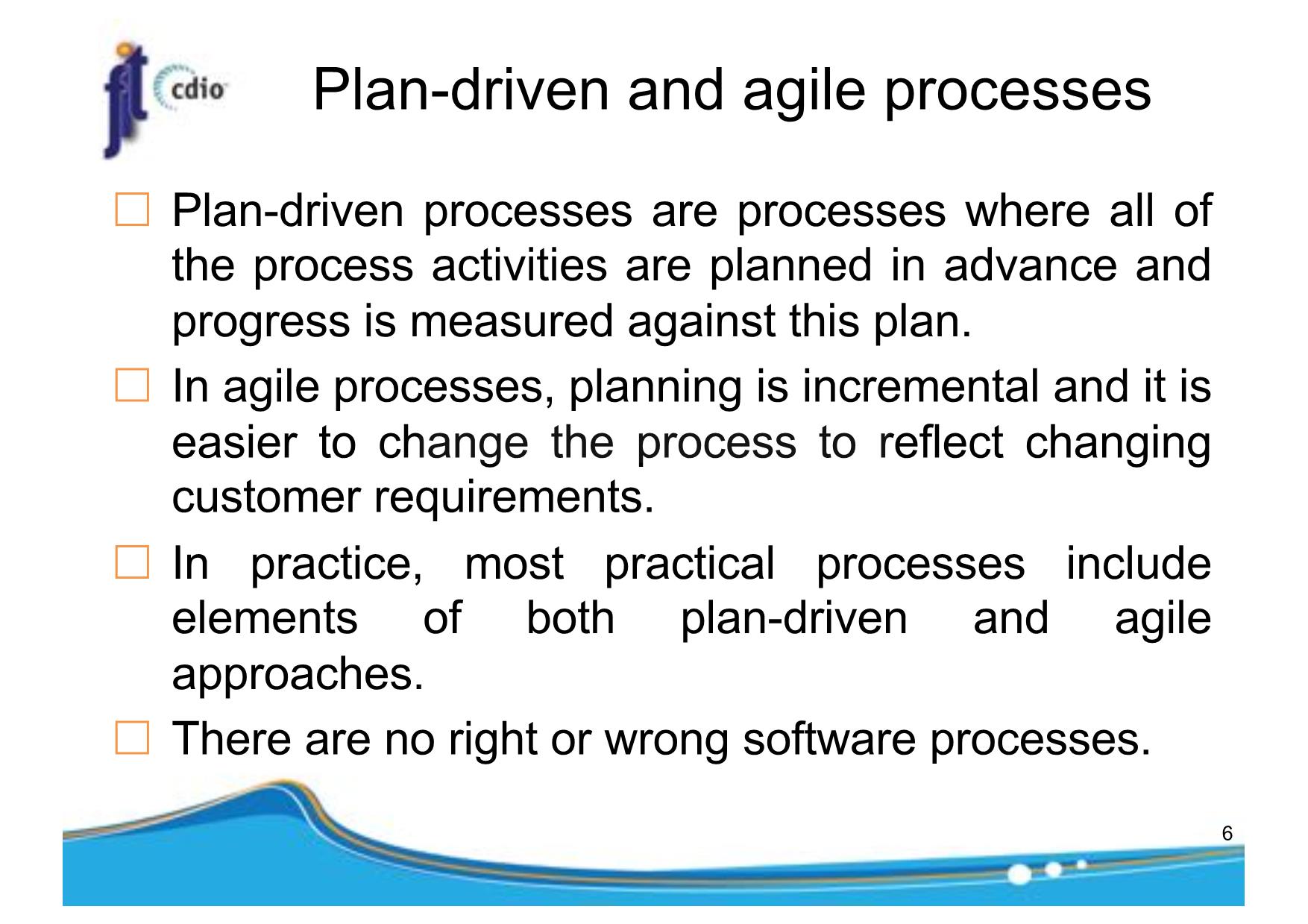
Trang 6
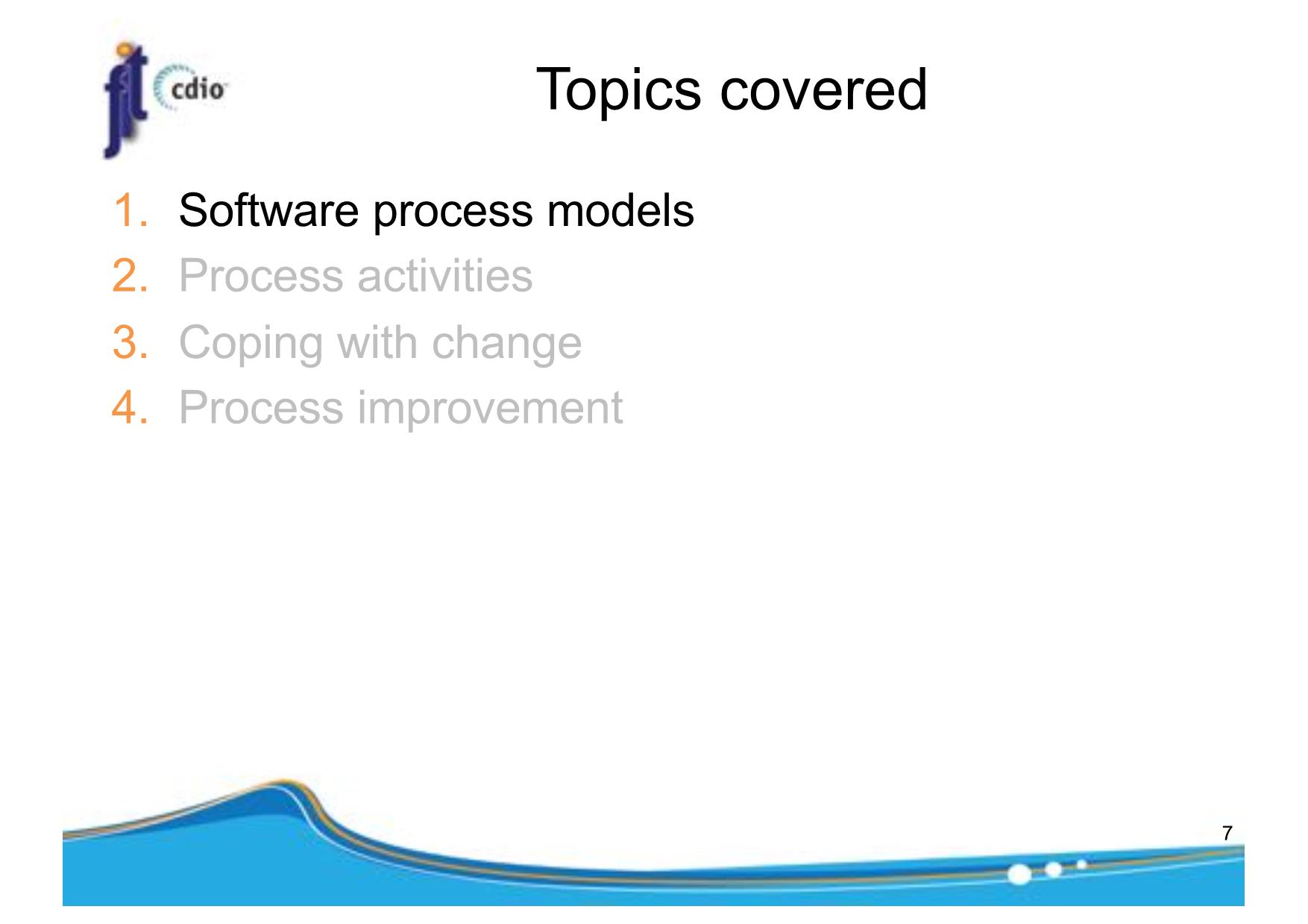
Trang 7
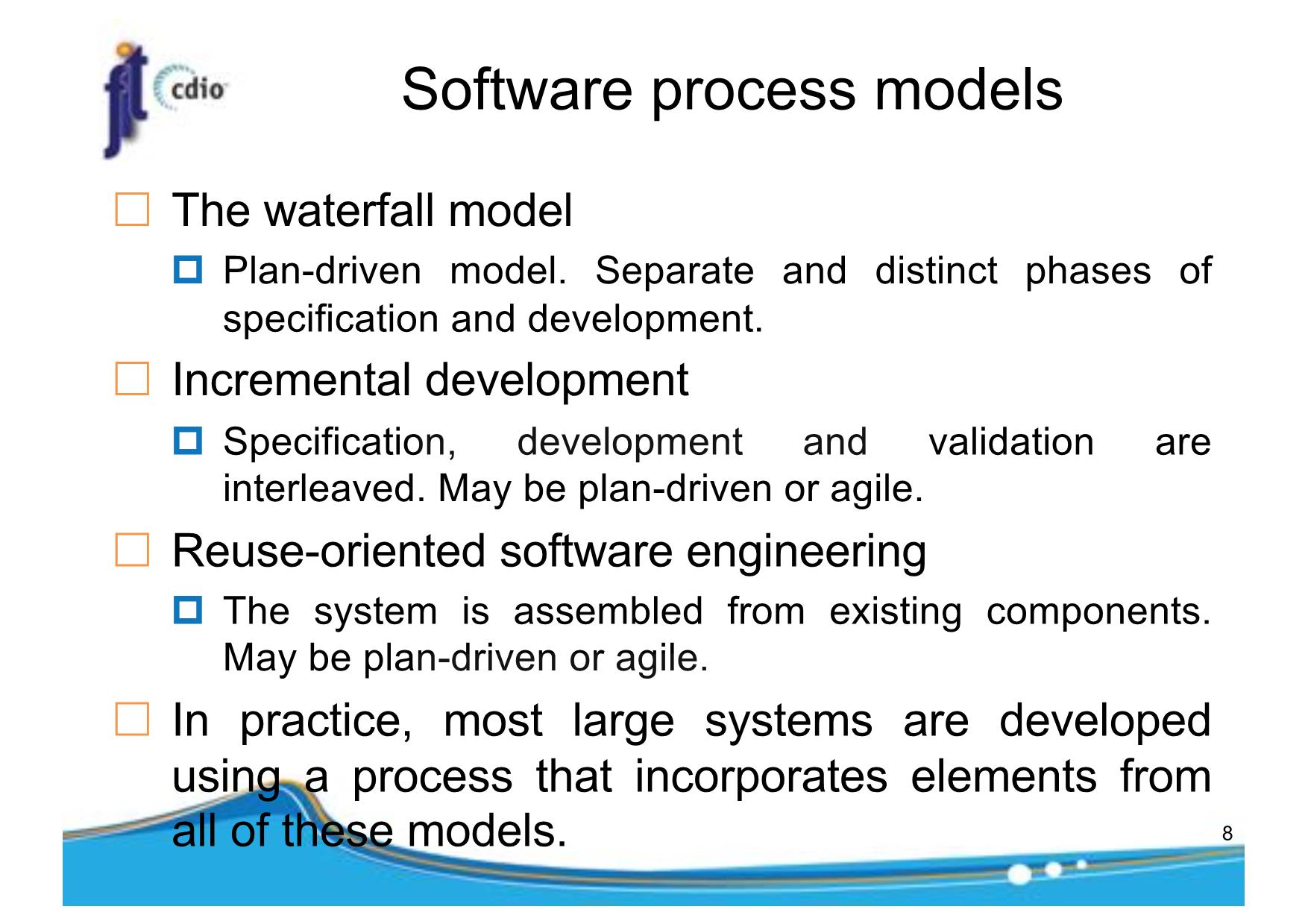
Trang 8
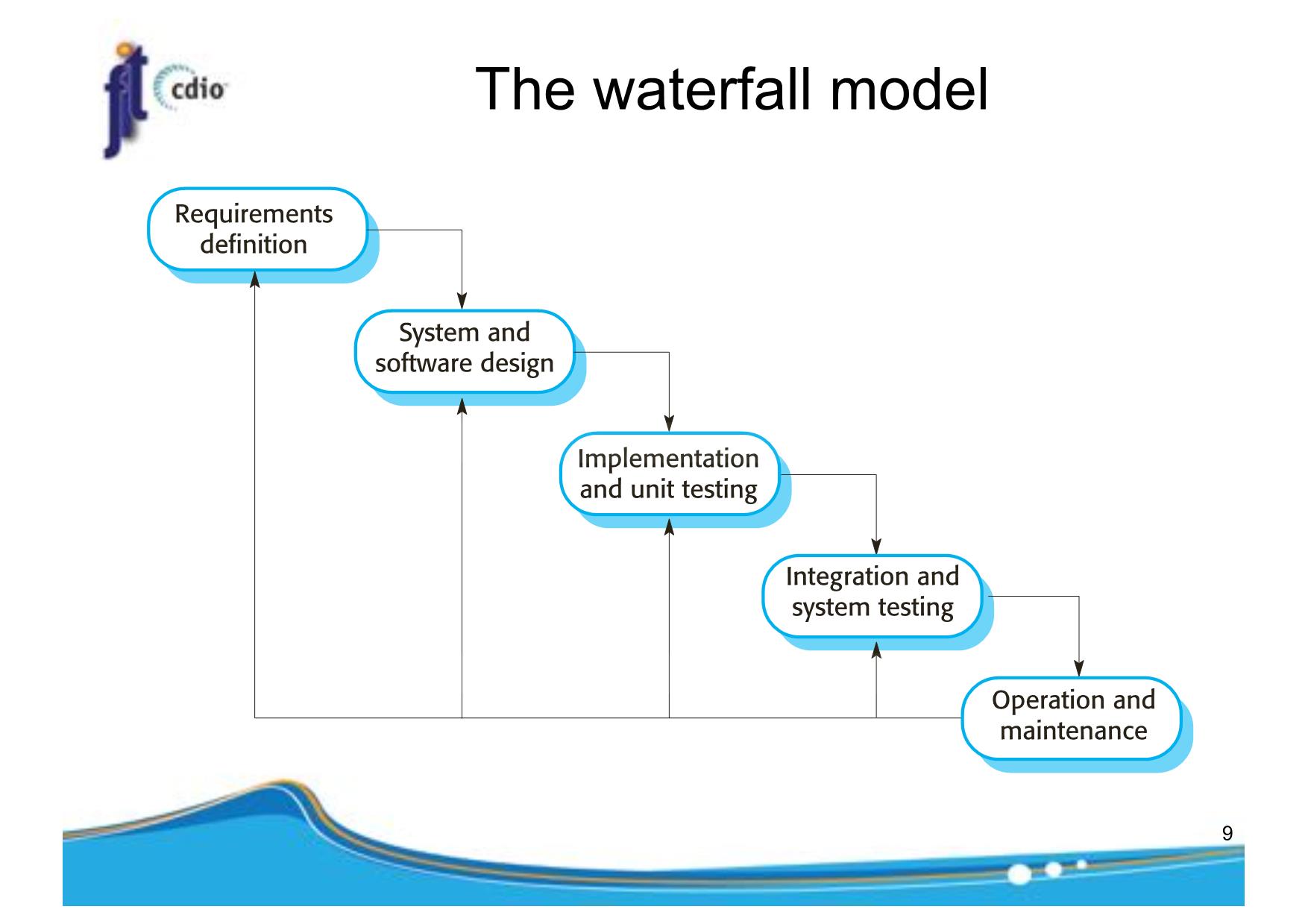
Trang 9
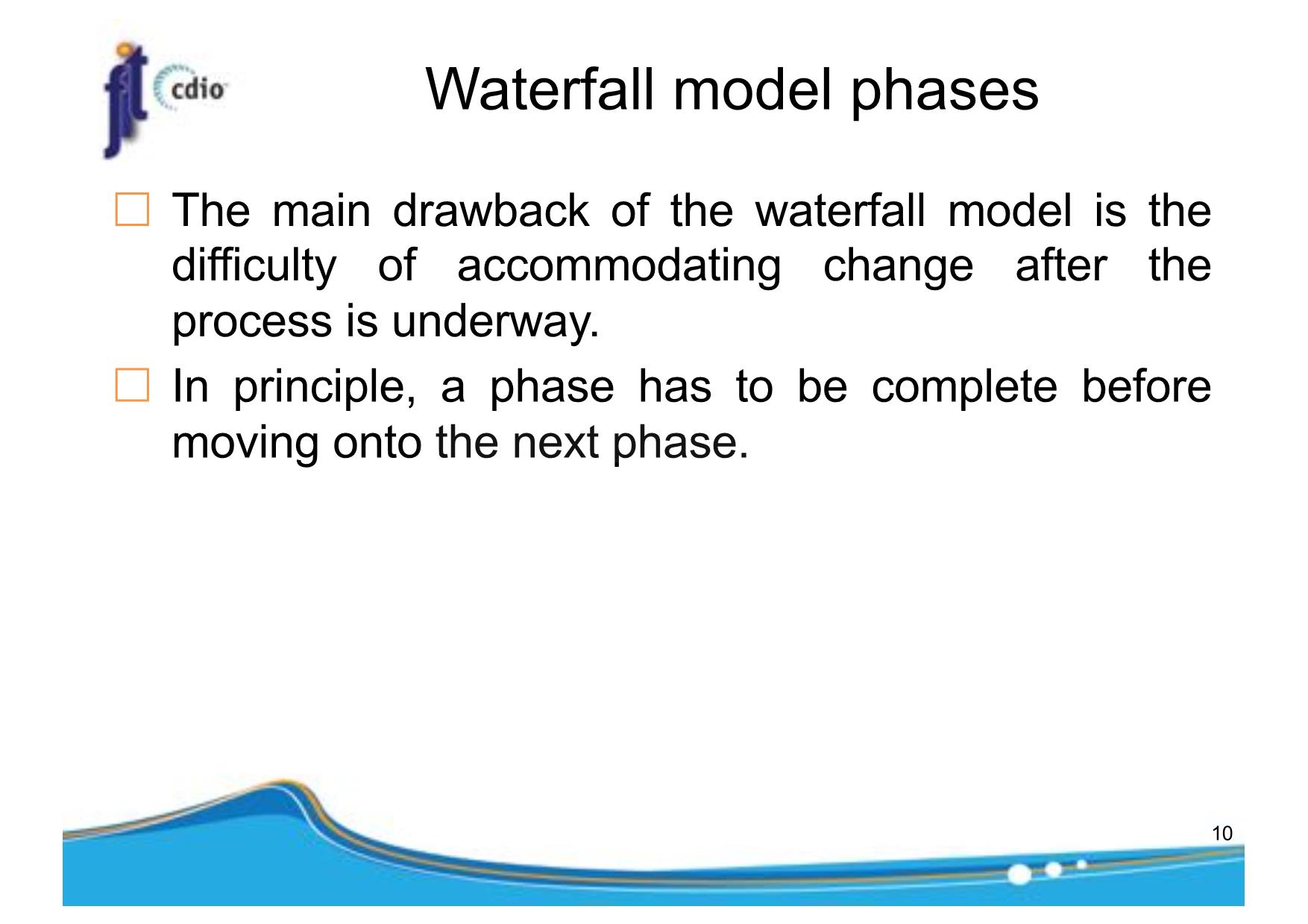
Trang 10
Tải về để xem bản đầy đủ
Bạn đang xem 10 trang mẫu của tài liệu "Bài giảng Introduction to Software Engineering - Week 2: Software Processes - Nguyễn Thị Minh Tuyền", để tải tài liệu gốc về máy hãy click vào nút Download ở trên
Tóm tắt nội dung tài liệu: Bài giảng Introduction to Software Engineering - Week 2: Software Processes - Nguyễn Thị Minh Tuyền
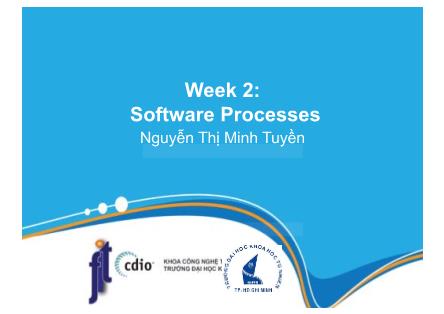
£ It is easier to get customer feedback on the development work that has been done. p Customers can comment on demonstrations of the software and see how much has been implemented. £ More rapid delivery and deployment of useful software to the customer is possible. p Customers are able to use and gain value from the software earlier than is possible with a waterfall process. 14 Incremental development problems £ The process is not visible. p Managers need regular deliverables to measure progress. If systems are developed quickly, it is not cost-effective to produce documents that reflect every version of the system. £ System structure tends to degrade as new increments are added. p Unless time and money is spent on refactoring to improve the software, regular change tends to corrupt its structure. Incorporating further software changes becomes increasingly difficult and costly. 15 Integration and configuration £ Based on systematic reuse where systems are integrated from existing components or COTS (Commercial-off-the- shelf) systems. £ Reused elements may be configured to adapt their behaviour and functionality to a user’s requirements £ Reuse is now the standard approach for building many types of business system 16 Types of reusable software £ Stand-alone application systems (sometimes called COTS) that are configured for use in a particular environment. £ Collections of objects that are developed as a package to be integrated with a component framework such as .NET or J2EE. £ Web services that are developed according to service standards and which are available for remote invocation. 17 Reuse-oriented software engineering Application system Configure Software available application discovery system Requirements Requirements specification refinement Adapt components Software Integrate evaluation Components system available Develop new components 18 Advantages and drawbacks £ Advantages p Reduced costs and risks as less software is developed from scratch p Faster delivery and deployment of system £ Drawbacks p requirements compromises are inevitable ¡ this may lead to a system that does not meet the real needs of users. p Loss of control over evolution of reused system elements 19 Topics covered 1. Software process models 2. Process activities 3. Coping with change 4. Process improvement 20 Process activities £ Real software processes are interleaved sequences of technical, collaborative and managerial activities with the overall goal of specifying, designing, implementing and testing a software system. £ The four basic process activities of specification, development, validation and evolution are organized differently in different development processes. £ For example: p In the waterfall model, they are organized in sequence, p In incremental development, they are interleaved. 21 Software specification £ The process of establishing what services are required and the constraints on the system’s operation and development. £ Requirements engineering process p Feasibility study: Is it technically and financially feasible to build the system? p Requirements elicitation and analysis: What do the system stakeholders require or expect from the system? p Requirements specification: Defining the requirements in detail p Requirements validation: Checking the validity of the requirements 22 The requirements engineering process Requirements Feasibility elicitation and study analysis Requirements specification Feasibility Requirements report validation System models User and system requirements Requirements document 23 Software design and implementation £ The process of converting the system specification into an executable system. £ Software design p Design a software structure that realises the specification; £ Implementation p Translate this structure into an executable program; £ The activities of design and implementation are closely related and may be inter-leaved. 24 A general model of the design process Design inputs Platform Requirements Data information specification description Design activities Architectural Interface Component design design design Database design Design outputs System Database Interface Component architecture specification specification specification 25 Design activities £ Architectural design, where you identify p the overall structure of the system, p the principal components, their relationships and how they are distributed. £ Interface design p define the interfaces between system components. £ Component selection and design p where you search for reusable components. If unavailable, you design how it will operate. £ Database design p design the system data structures and how these are to be represented in a database. 26 System implementation £ The software is implemented either by developing a program or programs or by configuring an application system. £ Design and implementation are interleaved activities for most types of software system. £ Programming is an individual activity with no standard process. £ Debugging is the activity of finding program faults and correcting these faults. 27 Software validation £ Verification and validation (V & V) is intended to show that a system conforms to its specification and meets the requirements of the system customer. £ Involves checking and review processes and system testing. £ System testing involves executing the system with test cases that are derived from the specification of the real data to be processed by the system. £ Testing is the most commonly used V & V activity. 28 Stages of testing Component Acceptance System testing testing testing 29 Testing stages £ Development or component testing p Individual components are tested independently; p Components may be functions or objects or coherent groupings of these entities. £ System testing p Testing of the system as a whole. Testing of emergent properties is particularly important. £ Acceptance testing p Testing with customer data to check that the system meets the customer's needs. 30 Testing phases in a plan-driven software process Requirements System System Detailed specification specification design design System Sub-system Module and Acceptance integration integration unit code test plan test plan test plan and test Acceptance System Sub-system Service test integration test integration test 31 Software evolution £ Software is inherently flexible and can change. £ As requirements change through changing business circumstances, the software that supports the business must also evolve and change. £ Although there has been a demarcation between development and evolution this is increasingly irrelevant as fewer and fewer systems are completely new. 32 System evolution Define system Assess existing Propose system Modify requirements systems changes systems Existing New systems system 33 Topics covered 1. Software process models 2. Process activities 3. Coping with change 4. Process improvement 34 Coping with change £ Change is inevitable in all large software projects. p Business changes lead to new and changed system requirements p New technologies open up new possibilities for improving implementations p Changing platforms require application changes £ Change leads to rework so the costs of change include both rework as well as the costs of implementing new functionality 35 Reducing the costs of rework £ Change anticipation (Change avoidance) p The software process includes activities that can anticipate possible changes before significant rework is required. p Example: a prototype system may be developed to show some key features of the system to customers. £ Change tolerance p The process is designed so that changes can be accommodated at relatively low cost. p This involves some form of incremental development. 36 Coping with changing requirements £ System prototyping p a version of the system or part of the system is developed quickly to check the customer’s requirements and the feasibility of design decisions. p This approach supports change anticipation. £ Incremental delivery p system increments are delivered to the customer for comment and experimentation. p This supports both change avoidance and change tolerance. 37 Software prototyping £ A prototype is an initial version of a system used to demonstrate concepts and try out design options. £ A prototype can be used in: p The requirements engineering process to help with requirements elicitation and validation; p In design processes to explore options and develop a UI design; p In the testing process to run back-to-back tests. 38 Benefits of prototyping £ Improved system usability. £ A closer match to users’ real needs. £ Improved design quality. £ Improved maintainability. £ Reduced development effort. 39 The process of prototype development Establish Define prototype prototype Develop Evaluate objectives functionality prototype prototype Prototyping Outline Executable Evaluation plan definition prototype report 40 Prototype development £ May be based on rapid prototyping languages or tools £ May involve leaving out functionality p Prototype should focus on areas of the product that are not well-understood; p Error checking and recovery may not be included in the prototype; p Focus on functional rather than non-functional requirements such as reliability and security 41 Throwaway prototypes £ Prototypes should be discarded after development as they are not a good basis for a production system: p It may be impossible to tune the system to meet non- functional requirements; p Prototypes are normally undocumented; p The prototype structure is usually degraded through rapid change; p The prototype probably will not meet normal organisational quality standards. 42 Incremental delivery £ The development and delivery is broken down into increments with each increment delivering part of the required functionality. £ User requirements are prioritised and the highest priority requirements are included in early increments. £ Once the development of an increment is started, the requirements are frozen though requirements for later increments can continue to evolve. 43 Incremental development and delivery £ Incremental development p Develop the system in increments and evaluate each increment before proceeding to the development of the next increment; p Normal approach used in agile methods; p Evaluation done by user/customer proxy. £ Incremental delivery p Deploy an increment for use by end-users; p More realistic evaluation about practical use of software; p Difficult to implement for replacement systems as increments have less functionality than the system being replaced. 44 Incremental delivery Define outline Assign requirements Design system Develop system requirements to increments architecture increment System incomplete? Validate Integrate Validate Deploy increment increment system increment System complete? Final system 45 Incremental delivery benefits £ Customer value can be delivered with each increment so system functionality is available earlier. £ Early increments act as a prototype to help elicit requirements for later increments. £ Lower risk of overall project failure. £ The highest priority system services tend to receive the most testing. 46 Incremental delivery problems £ Most systems require a set of basic facilities that are used by different parts of the system. p As requirements are not defined in detail until an increment is to be implemented, it can be hard to identify common facilities that are needed by all increments. £ The essence of iterative processes is that the specification is developed in conjunction with the software. p However, this conflicts with the procurement model of many organizations, where the complete system specification is part of the system development contract. 47 Topics covered 1. Software process models 2. Process activities 3. Coping with change 4. Process improvement 48 Process improvement £ Many software companies have turned to software process improvement as a way of enhancing the quality of their software, reducing costs or accelerating their development processes. £ Process improvement means understanding existing processes and changing these processes to increase product quality and/or reduce costs and development time. 49 Approaches to improvement £ The process maturity approach, which focuses on improving process and project management and introducing good software engineering practice. p The level of process maturity reflects the extent to which good technical and management practice has been adopted in organizational software development processes. £ The agile approach, which focuses on iterative development and the reduction of overheads in the software process. p The primary characteristics of agile methods are rapid delivery of functionality and responsiveness to changing customer requirements. 50 The process improvement cycle Measure Change Analyze 51 Process measurement £ Wherever possible, quantitative process data should be collected p However, where organisations do not have clearly defined process standards this is very difficult as you don’t know what to measure. A process may have to be defined before any measurement is possible. £ Process measurements should be used to assess process improvements p But this does not mean that measurements should drive the improvements. The improvement driver should be the organizational objectives. 52 Process metrics £ Time taken for process activities to be completed p E.g. Calendar time or effort to complete an activity or process. £ Resources required for processes or activities p E.g. Total effort in person-days. £ Number of occurrences of a particular event p E.g. Number of defects discovered. 53 Capability maturity levels Level 5 Optimizing Level 4 Quantitatively managed Level 3 Defined Level 2 Managed Level 1 Initial 54 The SEI capability maturity model £ Initial p Essentially uncontrolled £ Repeatable p Product management procedures defined and used £ Defined p Process management procedures and strategies defined and used £ Managed p Quality management strategies defined and used £ Optimising p Process improvement strategies defined and used 55
File đính kèm:
 bai_giang_introduction_to_software_engineering_week_2_softwa.pdf
bai_giang_introduction_to_software_engineering_week_2_softwa.pdf

